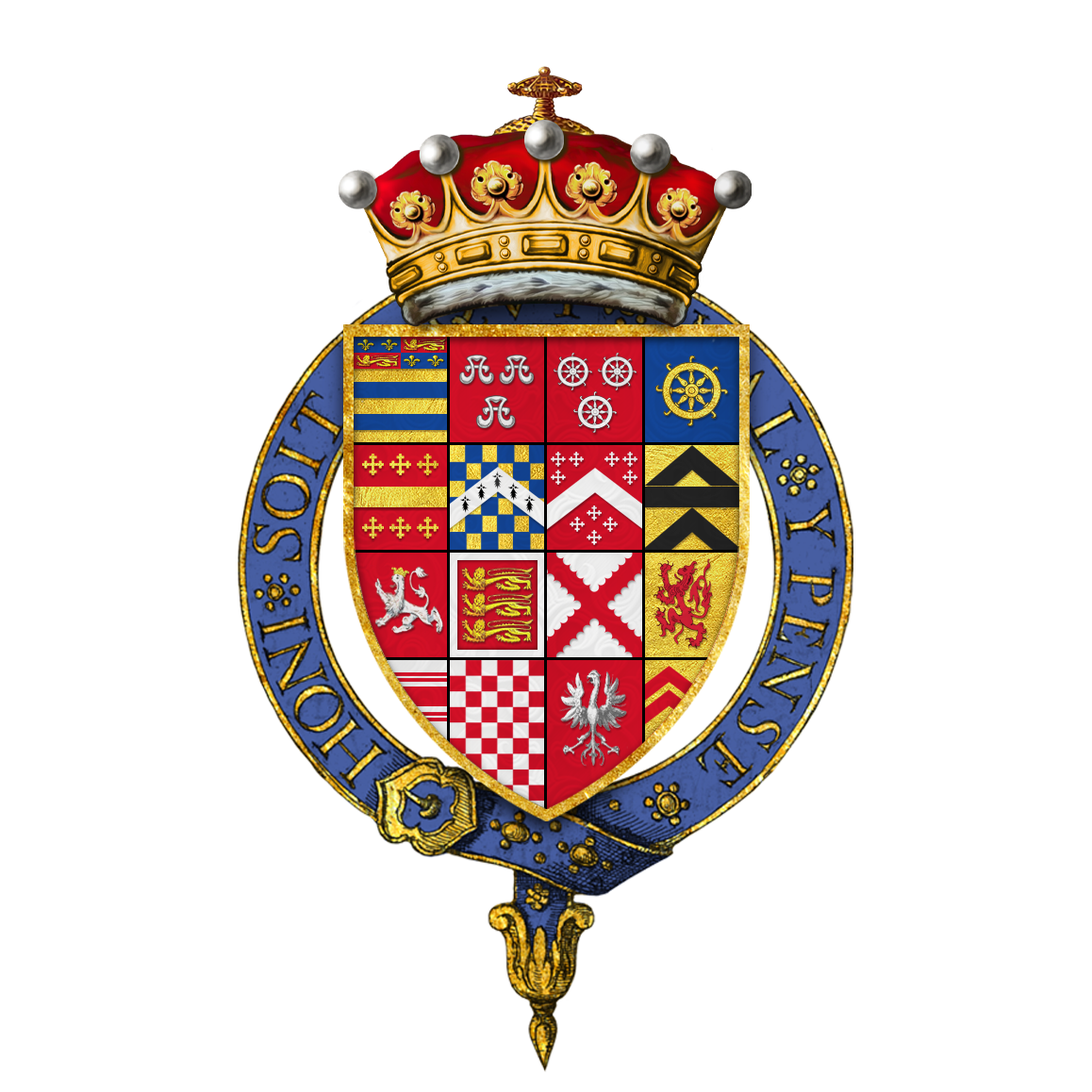|
Edward Manners, 3rd Earl Of Rutland
Edward Manners, 3rd Earl of Rutland, 14th Baron de Ros of Helmsley, KG (12 July 1549 – 14 April 1587) was the son of Henry Manners, 2nd Earl of Rutland, whose titles he inherited in 1563. Life He was the eldest son of Henry Manners, 2nd Earl of Rutland, and Margaret, fourth daughter of Ralph Neville, 4th Earl of Westmorland. He seems to have been educated at Oxford, though he did not graduate there as a student. He bore the title of Lord Roos or Ros, the old title of his family, until 1563, when by the death of his father he became third Earl of Rutland. He was made one of the queen's wards, and was specially under the charge of Sir William Cecil, who was connected with him by marriage. He accompanied the queen on her visit to Cambridge in 1564, and was lodged in St. John's College, and created M.A. on 10 August. In October 1566, he was made M.A. of Oxford. In 1569, he joined the Earl of Sussex, taking his tenants with him, and held a command in the army which suppressed the ... [...More Info...] [...Related Items...] OR: [Wikipedia] [Google] [Baidu] |
Earl Of Rutland
Earl () is a rank of the nobility in the United Kingdom. The title originates in the Old English word ''eorl'', meaning "a man of noble birth or rank". The word is cognate with the Scandinavian form ''jarl'', and meant "chieftain", particularly a chieftain set to rule a territory in a king's stead. After the Norman Conquest, it became the equivalent of the continental count (in England in the earlier period, it was more akin to a duke; in Scotland, it assimilated the concept of mormaer). Alternative names for the rank equivalent to "earl" or "count" in the nobility structure are used in other countries, such as the '' hakushaku'' (伯爵) of the post-restoration Japanese Imperial era. In modern Britain, an earl is a member of the peerage, ranking below a marquess and above a viscount. A feminine form of ''earl'' never developed; instead, ''countess'' is used. Etymology The term ''earl'' has been compared to the name of the Heruli, and to runic '' erilaz''. Proto-Norse ' ... [...More Info...] [...Related Items...] OR: [Wikipedia] [Google] [Baidu] |
Tail Male
In English common law, fee tail or entail is a form of trust established by deed or settlement which restricts the sale or inheritance of an estate in real property and prevents the property from being sold, devised by will, or otherwise alienated by the tenant-in-possession, and instead causes it to pass automatically by operation of law to an heir determined by the settlement deed. The term ''fee tail'' is from Medieval Latin , which means "cut(-short) fee" and is in contrast to "fee simple" where no such restriction exists and where the possessor has an absolute title (although subject to the allodial title of the monarch) in the property which he can bequeath or otherwise dispose of as he wishes. Equivalent legal concepts exist or formerly existed in many other European countries and elsewhere. Purpose The fee tail allowed a patriarch to perpetuate his blood-line, family-name, honour and armorials in the persons of a series of powerful and wealthy male descendants. By keepi ... [...More Info...] [...Related Items...] OR: [Wikipedia] [Google] [Baidu] |
Custos Rotulorum Of Nottinghamshire
This is a list of people who have served as Custos Rotulorum of Nottinghamshire. * Michael Stanhope bef. 1544–1552 * Sir John Byron, Sr. by 1562–1567. * Edward Manners, 3rd Earl of Rutland bef. 1573–1587 * John Manners, 4th Earl of Rutland 1587–1588 * Sir Thomas Stanhope bef. 1594–1596 * William Sutton 1597–1600 * William Cecil, 2nd Earl of Exeter 1600–1640 * William Cavendish, 1st Duke of Newcastle-upon-Tyne 1640–1646 * ''Interregnum'' * William Cavendish, 1st Duke of Newcastle-upon-Tyne 1660–1676 * Henry Cavendish, 2nd Duke of Newcastle-upon-Tyne 1677–1688 * William Pierrepont, 4th Earl of Kingston-upon-Hull 1689–1690 * ''vacant'' * John Holles, 1st Duke of Newcastle-upon-Tyne 1694–1711 For later custodes rotulorum, see Lord Lieutenant of Nottinghamshire. References Institute of Historical Research - Custodes Rotulorum 1544-1646 [...More Info...] [...Related Items...] OR: [Wikipedia] [Google] [Baidu] |
John Byron (died 1567)
Sir John Byron (1488–1567) was an English nobleman, politician, and knight of the Tudor era. He was Member of Parliament for Nottinghamshire in 1529. Life and family Byron was the son and heir of Nicholas Byron, who was knighted by Prince Arthur in 1502, and his wife, Joan Bushler. Sir John lived at Colwick in Nottinghamshire, before being granted Newstead Abbey in the same county by Henry VIII of England on 26 May 1540. He was appointed Lieutenant of Sherwood Forest. He was also Steward of Manchester and Rochdale. He was a trusted adviser to Henry VIII, and was at court most of his life. He started work on Newstead, making it into a home for his family. He was appointed Sheriff of Nottinghamshire and Derbyshire for 1523–24, 1527–28, 1542–43 and 1551–52. He was Custos Rotulorum of Nottinghamshire by 1562. Marriage and issue Byron married twice: firstly Isabel Lenington, by whom he had no issue and secondly Elizabeth Costerdine, the daughter of William Costerdi ... [...More Info...] [...Related Items...] OR: [Wikipedia] [Google] [Baidu] |

